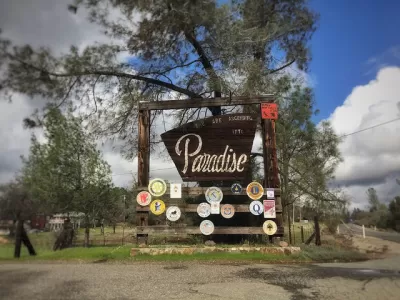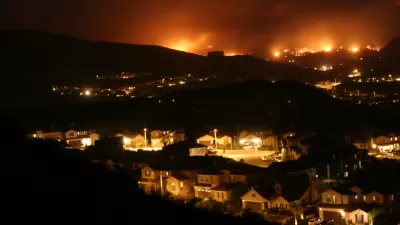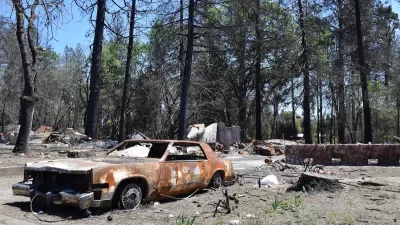Paradise, California, burned to the ground last year, and the town’s recovery has begun. But questions remain about the measures that should be put into place to prevent another disaster.

The Camp Fire leveled Paradise, California, last year, but signs of recovery are evident, reports Laura Newberry. A dozen houses have been rebuilt, businesses are reopening, and schools are back in session. But progress made since the disaster belies the many challenges that remain. "It’s a path forward that seems to hinge, in part, on a perplexing question: Just how many fire safety measures can Paradise afford?" says Newberry.
Residents understand that changes need to happen to make Paradise safer, but they are also pushing back on what they see as costly and intrusive proposals. The city council adopted a ban on gutters and retaining walls made of flammable materials, and Pacific Gas and Electric Company will bury utility lines.
However, a proposal to require a five-foot zone between houses and combustible materials has received mixed reviews from residents. "[Paradise officials also] know that some fire safety measures could tack thousands onto building costs for people who are already facing insurance settlement shortfalls in a place that has historically been a haven for seniors on limited budgets," notes Newberry.
Officials say they want to bring people back to Paradise, where the population has dropped from 27,000 to just 2,000, while also planning for the town’s long-term resiliency. In addition, a variety of immediate needs have to be addressed, including removal of half a million dead or dying trees and development of a safer road network, which could involve the purchase of private land.
FULL STORY: Paradise rebuilds, but fire safety sometimes takes a back seat to economic realities

Study: Maui’s Plan to Convert Vacation Rentals to Long-Term Housing Could Cause Nearly $1 Billion Economic Loss
The plan would reduce visitor accommodation by 25,% resulting in 1,900 jobs lost.

North Texas Transit Leaders Tout Benefits of TOD for Growing Region
At a summit focused on transit-oriented development, policymakers discussed how North Texas’ expanded light rail system can serve as a tool for economic growth.

Why Should We Subsidize Public Transportation?
Many public transit agencies face financial stress due to rising costs, declining fare revenue, and declining subsidies. Transit advocates must provide a strong business case for increasing public transit funding.

How Community Science Connects People, Parks, and Biodiversity
Community science engages people of all backgrounds in documenting local biodiversity, strengthening connections to nature, and contributing to global efforts like the City Nature Challenge to build a more inclusive and resilient future.

Alabama: Trump Terminates Settlements for Black Communities Harmed By Raw Sewage
Trump deemed the landmark civil rights agreement “illegal DEI and environmental justice policy.”

Dear Tesla Driver: “It’s not You, It’s Him.”
Amidst a booming bumper sticker industry, one writer offers solace to those asking, “Does this car make me look fascist?”
Urban Design for Planners 1: Software Tools
This six-course series explores essential urban design concepts using open source software and equips planners with the tools they need to participate fully in the urban design process.
Planning for Universal Design
Learn the tools for implementing Universal Design in planning regulations.
City of Santa Clarita
Ascent Environmental
Institute for Housing and Urban Development Studies (IHS)
City of Grandview
Harvard GSD Executive Education
Toledo-Lucas County Plan Commissions
Salt Lake City
NYU Wagner Graduate School of Public Service





























